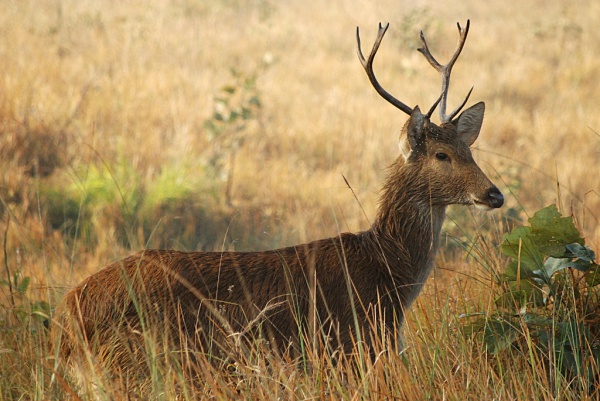Facts About Barasingha
The barasingha, also known as the swamp deer, is a captivating species of deer native to the Indian subcontinent. They inhabit fragmented regions of northern and central India, with isolated populations in southwestern Nepal. Unfortunately, they have gone extinct in Pakistan and Bangladesh.
What distinguishes the swamp deer from other Indian deer is its magnificent antlers. Mature stags typically boast antlers with 10 to 14 tines, as opposed to the fewer tines found in other species, making them a spectacular sight.
These deer are quite substantial in size, with males weighing between 370 to 620 pounds and females weighing from 287 to 320 pounds. Sadly, their numbers have declined due to hunting and habitat loss. Currently, they are primarily found in grasslands near forests and open areas, with some populations taking refuge in national parks and reserves.
There are three recognized subspecies of swamp deer, each adapted to different environments. Their diet mainly consists of grasses and aquatic plants, with peak feeding times in the mornings and late afternoons. The breeding season extends from September to April, with calves typically born between August and November.
Swamp deer face several threats, including poaching, habitat loss, and habitat degradation. To protect them, the species is listed on CITES Appendix I and is protected under various wildlife conservation acts. Conservationists closely monitor their populations in captivity, with some swamp deer residing in zoos across India, North America, and Europe.
Interestingly, swamp deer have been introduced to ranches in Texas for sport hunting. These trophy fees attract hunters, but conservationists warn that many populations are critically endangered due to habitat loss and human activities.

 Sri Lanka
Sri Lanka